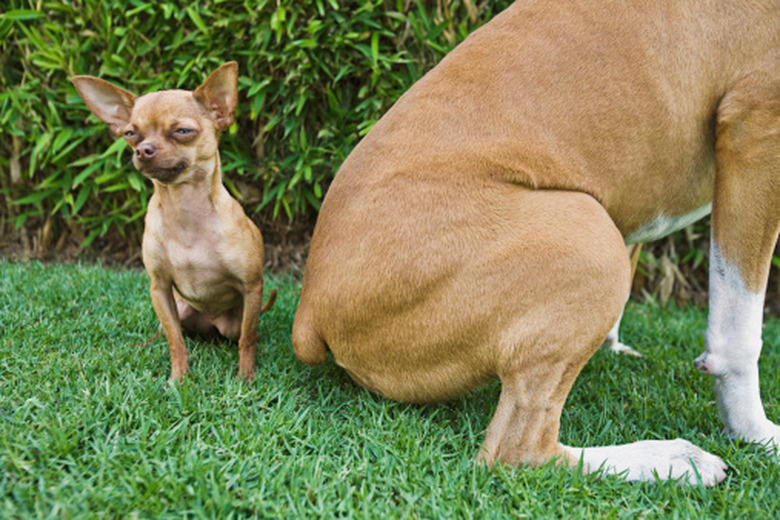How To Clean A Dog's Butt
When a dog is clean but it's anal area still has a distinctly unpleasant odor, it may need its anal glands cleaned. Expressing the anal glands clears out any impaction in this area, improving the dog's odor and comfort. While the veterinarian can express the dog's anal glands for you, this is a simple process to learn at home. Small dogs are more prone to this issue than large dogs, though any dog can be affected.
Things You'll Need:
Things You'll Need:
- Latex gloves
- Paper towels
Tip: Routine exercise and an increase of fiber in the dog' diet can help relieve the dog's anal glands.
Step 1
Put on a pair of latex gloves.
Step 2
Dampen two or three paper towels and set them aside.
Step 3
Lift your dog's tail, exposing the anal opening.
Step 4
Place your thumb and forefinger along either side of the anal opening.
Step 5
Press up slightly, using gentle but firm pressure. Continue doing so until you see a black or brownish-gray fluid push out of the anus. This is the fluid that was in the anal glands.
Step 6
Wipe the fluid up using dampened paper towels.
Always check with your veterinarian before changing your pet's diet, medication, or physical activity routines. This information is not a substitute for a vet's opinion.
